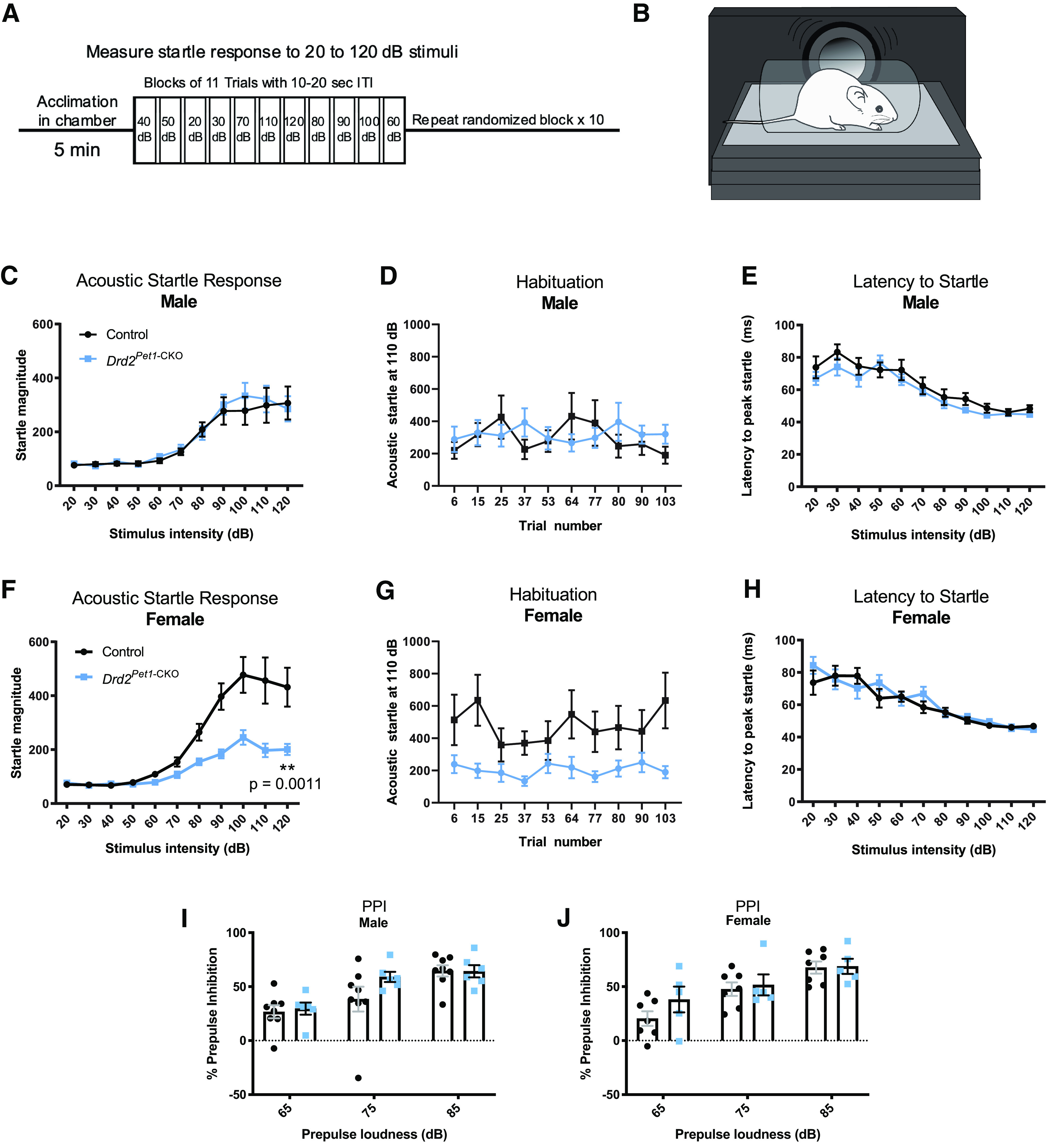Figure 3.

Drd2Pet1-CKO females, but not males, display attenuated acoustic startle responses (ASR). A, Schematic of ASR experimental design. After an initial 5-min acclimation, mice are exposed to 10 blocks of 11 trials of auditory stimuli ranging from 20 to 120 dB in quasi-randomized order with a 10- to 20-s intertrial interval (ITI). B, Schematic of ASR measurement apparatus, mouse is placed in a perforated holding chamber atop transducer platform adjacent to speaker (for detailed description, see Materials and Methods). C, F, Averaged ASR magnitudes (mean ± SEM) across increasing stimulus intensities in (C) male Drd2Pet1-CKO (blue, n = 13) and controls (black, n = 14), no significant difference, p = 0.7745, two-way ANOVA and (F) female Drd2Pet1-CKO (blue, n = 15) and controls (black, n = 16), Drd2Pet1-CKO females display significantly attenuated ASR, p = 0.0011, two-way ANOVA. D, G, Group averaged ASR for 10 trials at 110-dB stimulus in (D) males and (G) females, demonstrates no habituation to the startle stimulus; x-axis numbers refers to trial number out of 110 total trials. E, H, No significant differences in latency to startle are observed in (E) males, p = 0.1319, two-way ANOVA and (H) females, p = 0.5452, two-way ANOVA. I, J, No significant differences in prepulse inhibition of acoustic startle are observed in (I) males (n = 8 control, 6 Drd2Pet1-CKO), p = 0.4325, two-way ANOVA or (J) females (n = 7 control, 5 Drd2Pet1-CKO, p = 0.4380, two-way ANOVA).
